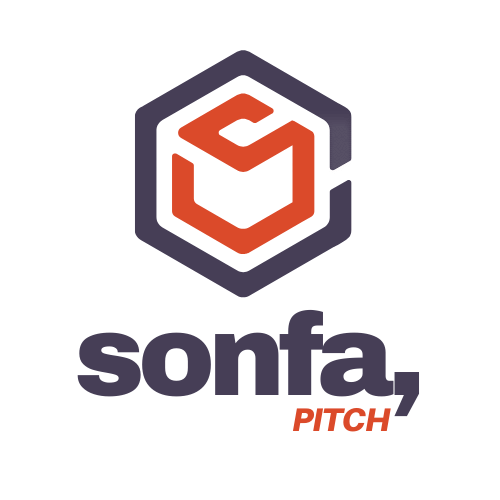Orchestras have been using the same instruments to play the same pieces for centuries. Naturally, this causes composers to write for orchestras in the same way as their ancestors. But when award-winning film composers and experimental musicians Matteo Pagamici and Michael Künstle wrote their new album DIMENSIONS for a 92-piece orchestra, they had a far-out idea: go in the completely opposite direction.
They sought to make the historic ensemble sound like a synthesizer by employing effects such as delay and distortion using only the natural instrument construction. It sounds simple, but in truth, they were disregarding hundreds of years of passed-down technique.
“By asking the players to put more pressure on the strings with the bow, you get the same effect that you would if you put a distortion plugin on it. It starts to sound squeaky and harsh, and almost unpleasant,” says Pagamici. It’s a simple shift, but one that goes against hundreds of years of instruction.
“The orchestra in general has such a huge history in music that sometimes it’s really hard to think of something new,” Künstle says. He and Pagamici discovered this new approach by operating in a world that conjoins orchestras with experimental techniques: film and TV composition.

When they were writing Neumatt, the first Swiss series ever sold to Netflix, they created a synth part on a Roland Jupiter-8. Then, they asked their violinist to perform the same part and received results they did not expect:
“There was a ‘wow’ moment, because it worked so well, but it wasn’t something that we had ever heard on the violin,” Pagamici says. “I don’t think we could have composed this for the violin without previously trying it on the synthesizer.” After this successful experiment, the rest of the dominoes fell.
“We thought, ‘What if we just flipped the process?’” says Künstle.
“Usually when you play a synthesizer and you describe the sounds, you say, ‘This patch sounds like a violin or a flute.’ We tried to do the opposite,” Pagamici adds, referencing methods of achieving this reversal through techniques such as alternate tunings for stringed instruments. For example, with three violin sections, they had one play the notes in tune, the second play the same note minus 50 cents, and the third play it plus 50 cents. They linked this approach to using a synthesizer with three oscillators.
“It’s crazy how well this works because what you get is just another timbre of sound,” Künstle says.

“It’s strange that this isn’t being done more often. It feels so intuitive to reverse the process and explore so many things that you can do with an orchestra if they play or think a bit differently,” Pagamici continues. Yet, by diving deeper into this technique, they realised previous composers were thinking similarly.
“You could orchestrate a note, thinking of an attack, sustain, and release,” Künstle says. “If you study [the Austrian composer] Erich Wolfgang Korngold, you realise that he did exactly that. I think that’s also part of the reason why this orchestration sounds so good.”
Künstle and Pagamici’s creative exploration aligns with the adventurous theme of DIMENSIONS, which they describe as a “musical travel diary.” The idea stems from Künstle’s youth when he would listen to a single record throughout a family trip, associating those memories with that music in perpetuity.
On the album, each of the 10 songs was influenced by a different place Künstle and Pagamici visited throughout their lives. This personal connection imbued their technical approach with emotional sustenance.
“Whenever we went to record in London, our mentality shifted a lot. We had different ideas and different inputs. We started thinking about how this affects our process,” Pagamici says. “I’ve been to Greenland a few times, which is a very unique location. Whenever I came back, my musical ideas were so fresh and different. I had so many inputs and new thoughts.”

When they were initially planning DIMENSIONS, Künstle and Pagamici were aligned on the unconventional technical approach. They hosted early sessions to define the musical language with soloists playing stringed instruments and bass flute.
From there, they each wrote separately, which is their general process for their compositional works and, this time, they had no notes for each other after their solo creative sessions.
“Once we are on the same page, we can almost write whatever we want individually, and it sounds like it’s from the same world,” Künstle says.
Pagamici composed the stirring string piece, Lighthouse, with a real-life delay. He wrote overlapping repeated lines, asking each player who followed the introduction of an idea to play with a different tonal colour or at a different volume.
“I’m a huge fan of delay effects. I used to put them on everything when I composed,” Pagamici says. “I thought, ‘What if I just compose a delay effect?’, which is so easy. When we first heard it being played live, it sounded like a plugin.”

Abstract 2.0 is one of Künstle’s pieces, in which he notated random marks for the string sections to create atonal tension to mimic a white noise effect. This acted as a buildup to an intentional “drop” moment.
“It was completely random and looked very funny. Scribbling lines on the notation — that doesn’t make any sense musically. But we just told them, ‘Play this, and let’s see what happens,’” Künstle says. “It’s amazing because the musician wants to make sense of it. So they come up with something that you wouldn’t be able to notate in another way. When more than one string player plays this, it runs over the whole range of the instrument. All the frequencies played at the same time, almost at every moment.”
Given this emphasis on the analogue approach to sonic colours that are usually applied in post, Künstle and Pagamici applied a very minimal recording process. They didn’t use any overdubs, and almost all the pieces are complete takes of the full ensemble.
“Usually in our composition process, when we record these elements in an isolated way, we would be very meticulous about which take we’re going to place where,” Pagamici says. “Here, it was almost a process of accepting whatever we get from the musicians in this particular take. With these electronic techniques, you never really know what you’re going to get.”
Audiences at orchestral concerts have known what to expect for a long time now. But thanks to Matteo Pagamici and Michael Künstle, the oldest performance format in the world has a fresh dose of excitement and uncertainty.

Harry Levin is a freelance journalist with credits in SPIN, Billboard, MusicTech, Grammy.com, Los Angeles Magazine, and more. His musical journey began 20 years ago with a Led Zeppelin CD. He played jazz trombone through college, produced large-scale electronic music events, and now spends his professional time writing and editing.






